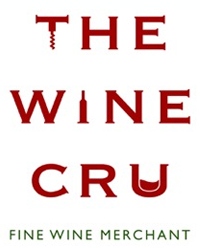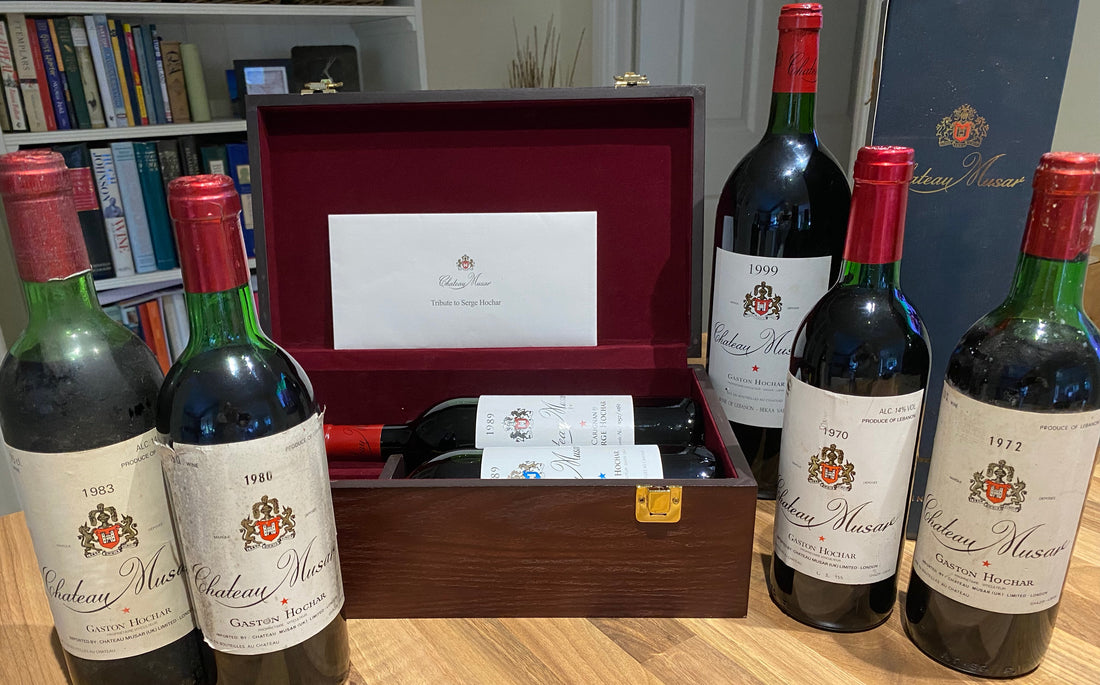A great vintage wine, but one that can divide the crowd and for that reason sometimes considered marmite.
I'm firmly in the love it camp and have been drinking it fairly regularly since I was first introduced to it when reading one of the late Michael Broadbent's book. More about his influence later.
In wine terms Chateau Musar is relatively new with its first vintage being 1933. Gaston Hochar returned to the Lebanon from France in 1930 with a desire to make wine. He established the winery in Ghazir and looked to the Beka'a valley for vineyards.
Lebanon was still occupied by the French army at this time and he met Major Ronald Barton of Chateau Leoville Barton and they became friends. Probably with some influence from Barton the majority of wine produced was bought by the French army for several years.
The rise to fame of Chateau Musar in the UK is largely due to Michael Broadbent. At the Bristol Wine Fair 1979, Broadbent, who was representing Christies, met Serge Hochar, Gastons son, who was showing Chateau Musar wines. Broadbent was so impressed with what he tasted that he wrote about them the next year in his Decanter magazine column. This piqued interest and the wines popularity rose.
Fast forward to 1984 and Serge was awarded the first ever Decanter magazine Man of the Year, which helped catapult the wine further towards cult status as a great wine.
It was around this time that I first became aware of this vintage red wine and started to seek it out. Older vintages being available at La Vingeronne, a fabulous wine shop in South Kensington run by Mike and Liz Berry during the 80's.
I tasted many vintages from the 60's and 70's. A wine that is never quite the same from one vintage to the next, which is possibly why some wine drinkers are put off or find it difficult. The corks are notorious when it comes to pulling them. The first thing that pops up on the Chateau Musar website is a box advising the use of tongs, rather than a cork screw. These days I'm blessed with a Durand which has never let me down.
Due to the ongoing conflict some vintages have been difficult. Tales of shell explosions around as the grapes were transported to the Chateau from the Beka'a. In 1976 no wine was made and in 1983 fighting was so close that it was thought they would not be able to pick the grapes, but the situation changed and they managed to harvest them, albeit later than usual producing a very memorable vintage.
The other much talked about subjects are Brett and Volatile Acidity (VA) and these also contribute to the marmite effect mentioned earlier.
Brett is the name given to a type of yeast that is sometimes found in wine. It can add complexity to the wine. Noted as leather, earthiness or spice and as such some use it deliberately while others consider it a fault sighting aromas of dampness and barnyards.
VA can be generated in wine produced by various microorganisms, including certain bacteria and yeasts, during fermentation and ageing. Like Brett in small amounts it can add complexity and also freshness and is deliberately used by some winemakers. Those who are not fans sight vinegary, sour flavours.
Whilst I have come across both whilst drinking Chateau Musar they have not spoilt my enjoyment and decanting certainly helps to reduce VA.
The blend of the red wine changes every year, but is now made up of Cabernet Sauvignon, Carignan and Cinsault. There is some Merlot grown, but seldom used now. In 1989 a 100% Carignan was also made.
Also worth trying are the Rosé, first vintage 1994, and the white wine first made in the 1950's. Both are capable of long ageing and in a class of their own as one would expect.
We have limited stocks of older vintages which can be found here.
The corks of Chateau Musar are a frustration for Musar lovers. They have a habit of breaking. To see how to deal with this see our blog on how to open older wines.

